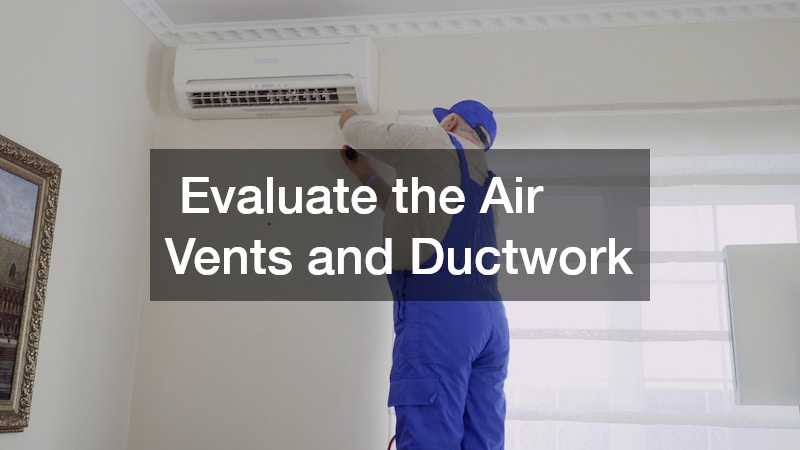When your air conditioner suddenly stops working—especially on a hot day—it can feel like a mini crisis. But before you panic or call for help, there are several steps you can take to troubleshoot the problem on your own. This guide will walk you through a series of checks and actions you can take when your AC system stops functioning, helping you stay cool while determining if you need professional help from trusted AC companies.
Step 1: Check the Thermostat Settings
The first thing you should do is ensure that your thermostat is set correctly. It might sound obvious, but settings can be accidentally changed, especially in households with children or multiple users.
-
Make sure the thermostat is set to “cool.”
-
Check that the temperature setting is lower than the current room temperature.
-
If the thermostat is programmable or smart, double-check that it isn’t in energy-saving or vacation mode.
If the thermostat display is blank or unresponsive, you may need to replace the batteries or check the power connection.
Step 2: Inspect the Circuit Breaker
Air conditioners can trip circuit breakers, especially during power surges or if the system is overloaded. Go to your electrical panel and:
-
Find the breaker labeled “AC” or “Air Conditioner.”
-
If it’s in the OFF or middle position, flip it completely OFF and then back ON.
-
Wait a few minutes to see if the system turns back on.
If your breaker continues to trip after resetting it, this could be a sign of a larger electrical issue. At this point, it’s wise to stop and contact professional AC companies to assess the problem safely.
Step 3: Replace or Clean the Air Filter
A dirty or clogged air filter can restrict airflow, causing the system to shut down or operate inefficiently. Many homeowners overlook this simple fix.
-
Locate your air filter—usually found near the return air duct or inside the indoor unit.
-
Remove the filter and inspect it for dust and debris.
-
If it’s dirty, either clean it (if reusable) or replace it with a new one.
Regularly checking and replacing air filters every one to three months can extend the life of your AC system and improve indoor air quality.
Step 4: Look for Ice on the Unit
Sometimes, airflow issues or refrigerant problems can cause ice to build up on the evaporator coils or refrigerant lines. When this happens, your AC may stop cooling properly or shut down altogether.
-
Turn off the system completely.
-
Open the access panel or look at the coils and refrigerant lines.
-
If you see ice or frost, leave the system off and let it thaw for a few hours.
-
Once thawed, turn the system back on and observe its performance.
If icing continues to occur, it may indicate a more serious issue like low refrigerant or poor airflow, requiring the attention of licensed AC companies.
Step 5: Check the Outdoor Unit
If your indoor unit appears to be running but you don’t feel cool air, the issue may be with your outdoor condenser unit.
-
Go outside and inspect the unit for any signs of damage, blockage, or debris.
-
Clear away leaves, grass, and other obstructions from around the unit.
-
Listen for any unusual noises such as buzzing or rattling, which could indicate mechanical issues.
Sometimes, the disconnect switch (usually a box mounted on the wall near the unit) may be turned off. Open the box and make sure the switch is in the ON position.
Step 6: Evaluate the Air Vents and Ductwork
Poor airflow from your vents can make it seem like your AC isn’t working, even if the system is technically running.
-
Walk around your home and check each vent.
-
Make sure none are blocked by furniture, curtains, or rugs.
-
Open any closed vents to allow full airflow.
-
Look for any signs of leaks or disconnected ducts, especially in attics or crawlspaces.
If airflow seems weak in certain rooms, duct cleaning or sealing may be required—services that reputable AC companies can provide.
Step 8: Contact a Professional
If none of these steps resolve the issue, it’s time to call in the experts. Look for licensed, insured, and well-reviewed AC companies in your area. Professional technicians have the tools and experience to diagnose and fix complex issues such as refrigerant leaks, motor failures, or faulty wiring.
When reaching out, be ready to describe the issue in detail:
-
What’s happening (no cool air, strange noises, no airflow)?
-
When did the issue start?
-
What troubleshooting steps have you already tried?
This helps the technician prepare for the service call and may even speed up the repair process.
When your AC stops working, it’s easy to feel overwhelmed, but most issues can be resolved with a bit of troubleshooting. From checking the thermostat and air filter to inspecting your circuit breaker and outdoor unit, these steps can help restore comfort quickly. And if you need a helping hand, professional AC companies are always ready to get your system back on track.
